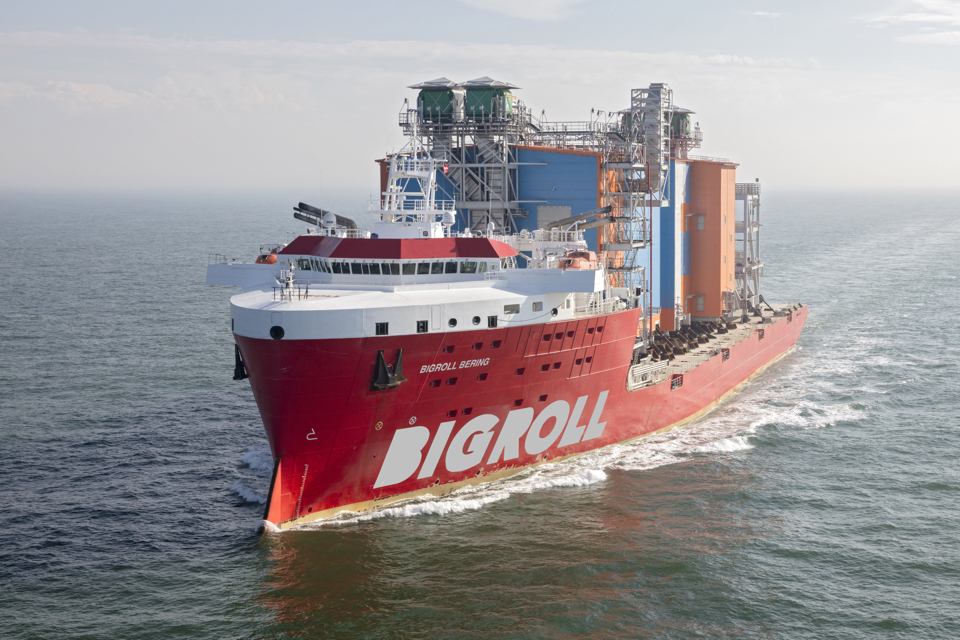A group of project carriers want the IMO to develop clearer rules for the loading and lashing of project cargo. Through eight revisions to the Cargo Stowage and Securing (CSS) Code, the shipping companies want to improve safety and their competitive position.
The cry for better regulation follows the trend of ever-larger cargoes transported on ships that are not specifically designed for the carriage of project cargo.
‘The rules become very grey when something is classified as project cargo,’ says senior project engineer Paul Hoogenhout of RollDock. ‘Currently, the regulation of the IMO is either too indecisive or way too conservative. There’s a lack of black and white do’s and dont’s and if we want to guarantee safety in our industry, we need to develop a uniform set of rules with clearer definitions.’
There’s a lack of black and white do’s and dont’s
RollDock is one of the members of the Heavy Lift Exchange Forum, a round table for heavy-lift shipping companies initiated by DNV GL, which has appointed improved sea fastening regulation as its top priority.
The Heavy Lift Exchange Forum has two primary concerns when it comes to Annex 13 of the IMO’s CSS Code, which covers heavy and oversized cargo:
- The calculation methods it uses are too simple, and
- sea conditions in the North Atlantic Ocean are too conservative to serve as a basis for all global shipping routes as the waves in this area are comparatively high.
‘Seasoned project carriers often use a set of guidelines of DNV GL, which we feel is better at determining how to fasten a specific load,’ Hoogenhout explains. ‘The problem is these guidelines are more difficult to use for companies not normally engaged in project cargo so they usually resort to Annex 13, creating differences in safety and an uneven level playing field.’
Eight Revisions
To create improved and uniform rules, the project carriers in the Heavy Lift Exchange Forum want to make eight changes to IMO’s Annex 13.
One of the eight proposals is about the vessel survival criteria in case of a major cargo shift. The project carriers want the static heeling angle to be no more than 25 degrees before counter ballasting begins.
If ro/ro ships want to transport project cargo,
they should adhere to the same level of safety.
‘As a heavy-lift operator, you have to comply with strict regulations in terms of stability. If ro/ro ships, which are notorious for their poor damage stability, want to transport project cargo, they should adhere to the same level of safety,’ Hoogenhout says.
Some of the proposed revisions are major changes. For instance, the project carriers want the IMO to properly address weather-dependent lashing. Currently, cargo accelerations are determined by using a rule of thumb or advanced calculations, but neither takes weather conditions into account.
Another aspect is that the IMO has not taken speed reductions into account. ‘When calculating the vertical forces a load will endure, we have to calculate with full vessel speed. In reality, we will often sail with lower speeds when sailing in head seas. We want the IMO to take good seamanship into account because now, calculations are often way too conservative,’ Hoogenhout explains.
The carriers also want new rules for the use of sea fastening. ‘Hard and soft sea fastening should not be combined in the same direction of a force,’ says Hoogenhout, explaining that the difference in materials can create an uneven distribution of the forces. ‘For each direction (longitudinal, transverse and rotational) carriers should choose if they want to use hard sea fastening, like steel stoppers, or soft sea fastening, like wires and ropes.’
ICHCA
The project carriers are trying to realise the proposed changes through lobbying efforts and joint industry projects. One of the involved organisations is the International Cargo Handling and Coordination Association (ICHCA).
Javier Quintero Saavedra, chairman of the Dry Bulk Cargoes Working Group of ICHCA technical panel and Head of HSE with a multipurpose terminal operator, says he ‘fundamentally’ agrees with Hoogenhout’s views.
‘Our company handles a lot of project cargo and we’re experiencing the same difficulties as the carriers with some types of them,’ Saavedra says.
A subcommittee of the IMO is currently looking into some of the desired changes. ‘In September, amendments to IMO’s CCS Annex 13 were discussed and four alternative weather dependent acceleration reduction curves were tabled, but further discussions to agree on a single one will be held at the next meeting in September 2020,’ Saavedra says.
He added that some of the proposed amendments have been widely welcomed, particularly the one on vessel survival criteria in case of major cargo shift. Others, like the speed reductions in head seas, however, will probably not be accepted as an operational parameter.
Picture: Ice-classed BigRoll Module Carrier BigRoll Bering transporting cargo to the Yamal site (SWZ|Maritime July/August 2019/Roll Group).
This article first appeared on Project Cargo Journal, a sister publication of SWZ|Maritime. Paul Hoogenhout and Javier Quintero Saavedra spoke about the modernisation of the lashing regulations at the Project Cargo Summit, which was held in Rotterdam last month. The full presentation of Paul Hoogenhout can be found here.








